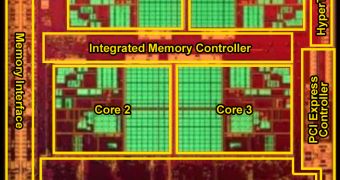Eagerly awaited by many to be officially announced by AMD, the upcoming Llano processors will mark a turning point in the company's future strategy, as starting with this architecture AMD will begin to invest a lot more in the graphics and video performance of their CPUs than in raw x86 performance.
“Our goal is to provide good headroom for video and graphics workloads, and to this effect “Llano” is designed to be successful,” reads a blog post by Godfrey Cheng, director of the Client Technology Unit at AMD.
“With our “Bulldozer” core and in future Bulldozer-based products, we are designing for faster and more efficient x86 performance; however, AMD is seeking to deliver a balance of graphics, video, compute and x86 capabilities and we are confident our APUs provide the best recipe for the great majority of consumers.”
The post goes to explain how personal computing has changed in the last decade, as today the capacity to multitask, improve image quality and enhance power efficiency are much more important than raw x86 performance in determining the end-user's experience with a certain PC system.
As a result, AMD's engineers have been monitoring for about four years the way in which computers are used to find out what kind of capabilities the company's Fusion APUs should offer.
The result of all those investigations are the C and E-series of APUs, which are going to be soon joined by their big brother the A-Series APU (codenamed “Llano”) in the near future.
According to AMD, when compared to present-day processor architectures, like Intel's Sandy Bridge (which shares the same size and transistor count as Llano), Llano is a completely different beast as the die area available to graphics and x86 processing has been divided so that it better reflects the typical workloads a computer faces today.
How AMD's strategy will pay out in the near and distant future it still remains to be seen, but Llano really seems to pack quite a punch against Sandy Bridge as one AMD demonstration video proves.

 14 DAY TRIAL //
14 DAY TRIAL //